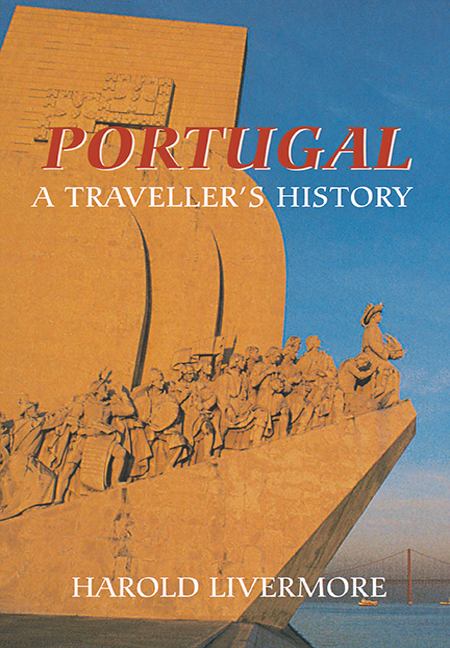Book contents
- Frontmatter
- Contents
- List of Illustrations
- Foreword
- 1 Introduction
- 2 Portugal in History
- 3 Before Portugal
- 4 Islamic Portugal
- 5 Architecture
- 6 Painting
- 7 Music
- 8 Birds
- 9 Fishing
- 10 Portuguese Wines
- 11 Lisbon
- 12 North from Lisbon
- 13 Oporto
- 14 North of Oporto
- 15 Interior Portugal
- 16 Alentejo
- 17 Algarve
- Afterword
- Index
- Frontmatter
- Contents
- List of Illustrations
- Foreword
- 1 Introduction
- 2 Portugal in History
- 3 Before Portugal
- 4 Islamic Portugal
- 5 Architecture
- 6 Painting
- 7 Music
- 8 Birds
- 9 Fishing
- 10 Portuguese Wines
- 11 Lisbon
- 12 North from Lisbon
- 13 Oporto
- 14 North of Oporto
- 15 Interior Portugal
- 16 Alentejo
- 17 Algarve
- Afterword
- Index
Summary
Architecture is undertaken by those who have the means to engage in it. There are two styles for which Portugal is famous, that called Manueline after King Manuel I, who disposed of great wealth resulting from the opening of trade with the East, and the baroque of John V, which arose from the profusion of Brazilian gold and diamonds in the eighteenth century. Both mingle innovation with forms and practices of the past. It is unwise to look for a purity of style which obeys only some imaginary text-book. Buildings may be secular or ecclesiastic or both. There is a break with the past when rulers and nobles ceased to hold castles or towers and built palaces or mansions. There is no specific moment at which this occurs; King Manuel built the Paços da Ribeira in Lisbon in about 1500, without at once abandoning the castle of St George. Ecclesiastical architecture usually obeys traditional norms, but in a country with limited natural resources the building of a cathedral might take a century. The five great cathedrals of Oporto, Braga, Coimbra, Lisbon and Évora were built on the site of older religious buildings, and may be regarded as making a new start. The great monastic church of St Mary of the Victory at Batalha, near Leiria, one of the finest buildings in Europe, was begun to commemorate the victory of Aljubarrota in 1385 but was extended by the ‘chapels’ added more than a century later and left ‘imperfeitas’ or unfinished. In less wealthy places, it was usual to add new fronts to older buildings when need arose and resources permitted. By the eighteenth century, the existing cathedrals and churches could only be decorated, either with tiles or gilded woodwork. This is often described (and dismissed) as ‘baroque’. In fact, the enormous palace-monastery of Mafra, perhaps intended to be the largest in Europe, explores a wide range of architectural and artistic possibilities of the age without indulging in either azulejos or gilt. It was the work of a south-German named Ludwig, trained in Rome where his name became Ludovice. He seized the golden opportunity to bring together the best available craftsmen. In some ways, Mafra is less ‘baroque’ than St Paul's in London.
- Type
- Chapter
- Information
- Portugal: A Traveller's History , pp. 50 - 61Publisher: Boydell & BrewerPrint publication year: 2004

